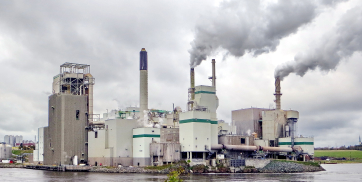In this month’s Research Digest, we catch you up on peer-reviewed science including satellite identification of methane ultra emitters, underestimation of cattle emissions, urban GHG “hot-spot” identification, unexpected leakage rates in Utah, the effect of targeting sour gas wells, and methane emissions in Western Canada.
Oil and Gas Methane Ultra-Emitters Ripe for Cost Effective Climate Change Mitigation
Satellite methane imaging is used to collect data on hundreds of large methane sources (in many cases, > 150,000 kg/h). Emissions from these ultra-emitters are estimated to account for ~10% of global Oil & Gas methane emissions from production. The authors recommend cost-effective climate change mitigation as a result of their findings, which can be found here.
Satellite-Based Methane Emissions in Western Canada
Using data obtained by satellite and aircraft, researchers found increasing methane emissions in Western Canada until 2013. However, methane emissions plateaued after 2014. The researchers conclude that although both Wetlands and Oil & Gas production are primarily responsible for methane emissions, the increases are attributed largely to Oil & Gas. Read more here.
Methane Super-Emitters Detected by Satellite at Crude Oil Production sites in Turkmenistan
Using satellite data, researchers have identified 29 large methane sources on the west coast Turkmenistan. Analysis of these emission plumes revealed individual emission rates greater than 1,000 kg/hr with some as high as 20,000 kg/hr. The authors believe that the high emission rates in this area are due to a decrease in the use of flaring to treat excess gas. Read more here.
Cattle Farm Methane Emissions Underestimated by Current Models
IPCC models are found to underestimate methane emissions by 35% when compared to whole farm quantification at 9 cattle farms in Denmark. Higher emission rates are measured during the summer months, and on farms with more animals. The authors suggest that methane inventory models should be improved by incorporating emissions directly from cows and manure. Read more here.
Methane Emission Hotspots Identified via Aircraft in Seoul, South Korea
CO, CO2, and CH4 are quantified with airborne laser flights over Seoul. The researchers were able to identify urban hotspots localized to individual buildings and demonstrate weekday/weekend temporal variability in GHG concentration. Read more here.
Rate of Production does not Affect the Relative Rate of Methane Leakage
Analysis of in-situ methane data from multiple production sites in Utah’s Uinta basin shows that methane emissions have dropped by 50% between 2015 and 2020, alongside declining production. However, proportional loss (methane intensity) has remained steady at 6-8% of production. Read more here.
Policies Mitigating Odorous Compounds Also Reduce Methane Leakage
Over 2000 cold heavy oil Albertan production sites in the Peace River and Lloydminster areas are compared. Although Peace River has a higher proportion of venting sites, the Lloydminster area have fewer sites with higher rates. The authors suggest this may be in part due to mitigation strategies targeting sour gas. Read more here.





